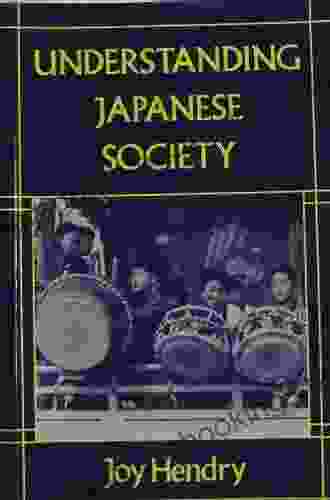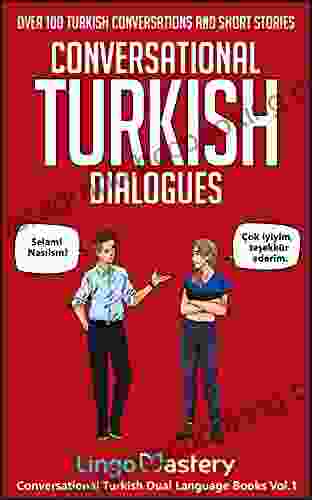Understanding Japanese Society: Nissan Institute Routledge Japanese Studies

Japan, a land steeped in ancient tradition and cutting-edge modernity, has long captivated the world with its enigmatic allure. From its cherry blossom festivals to its technological prowess, Japan's unique culture has intrigued and fascinated countless observers. However, truly understanding Japanese society requires delving beneath the surface, exploring the intricate web of customs, traditions, and values that have shaped this extraordinary nation.
4.4 out of 5
| Language | : | English |
| File size | : | 37563 KB |
| Text-to-Speech | : | Enabled |
| Screen Reader | : | Supported |
| Enhanced typesetting | : | Enabled |
| Word Wise | : | Enabled |
| Print length | : | 334 pages |
Historical Foundations
To fully comprehend Japanese society, it is essential to trace its historical roots. Japan's origins lie in the Yayoi period (300 BCE - 300 CE),characterized by the of wet-rice cultivation and the assimilation of Chinese cultural influences. The subsequent Nara period (710 - 794 CE) saw the establishment of a centralized state and the flourishing of Buddhism.
The Heian period (794 - 1185 CE) marked a golden age of Japanese culture, with the development of the kana syllabary, the rise of courtly literature, and the emergence of a distinctive aesthetic sensibility. The Kamakura period (1185 - 1333 CE) witnessed the rise of the warrior class, or samurai, and the establishment of the shogunate system of military rule.
The Feudal Era
The feudal era, spanning the Muromachi (1336 - 1573 CE),Sengoku (1467 - 1603 CE),and Edo (1603 - 1868 CE) periods, was a time of political upheaval and cultural change. The constant warfare of the Sengoku period led to the rise of powerful feudal lords, known as daimyō, who ruled over vast domains and commanded private armies.
The Edo period, also known as the Tokugawa period, brought relative peace and stability to Japan. During this time, the merchant class gained prominence, and a thriving urban culture emerged. The rigid social hierarchy and strict adherence to Confucian values characterized this period, which would have a profound impact on the development of Japanese society.
The Meiji Restoration and Modernization
The Meiji Restoration of 1868 marked a watershed moment in Japanese history, as the country embarked on a rapid and comprehensive modernization process. Japan adopted Western technologies, institutions, and ideas, transforming its political, economic, and social fabric.
The Meiji period also witnessed the rise of nationalism and imperialism, as Japan sought to expand its influence in the region and beyond. The country's military power grew rapidly, culminating in its victory in the Russo-Japanese War of 1904-1905.
The 20th Century and Beyond
The 20th century brought both triumphs and tragedies for Japan. The country emerged as a major global power during World War II, but its defeat in 1945 led to a period of occupation by the Allied forces. After the war, Japan experienced a remarkable economic recovery, becoming one of the world's largest economies.
The post-war period also saw significant social and cultural changes, including the increasing role of women in society and the emergence of a new youth culture. Japan has continued to evolve in the 21st century, grappling with demographic challenges, technological advancements, and the ongoing globalization of the world.
Culture and Society
Japanese society is renowned for its unique cultural and social characteristics. Harmony and collectivism are highly valued, and individuals are expected to prioritize the group over their own self-interest. Respect for authority and hierarchy is deeply ingrained, and politeness and etiquette play a crucial role in social interactions.
Japanese culture places great emphasis on aesthetics and refinement. Traditional arts such as calligraphy, tea ceremony, and flower arrangement are highly regarded, and the pursuit of beauty and perfection is evident in all aspects of life.
Religion
Religion plays a significant role in Japanese society, although it is not as pervasive as in some other countries. The two main religions in Japan are Shinto, an indigenous animistic faith that venerates nature spirits, and Buddhism, which arrived in Japan from China in the 6th century CE. Many Japanese people practice both religions, and there is a high level of religious tolerance and syncretism.
Education
Education is highly valued in Japanese society, and the country boasts one of the world's most advanced and rigorous education systems. Primary and secondary education are compulsory, and students are expected to achieve high academic standards. Japanese universities are renowned for their research and teaching excellence, and the country produces a highly skilled workforce.
Language
The Japanese language is a complex and fascinating aspect of Japanese culture. It is a tonal language with a unique writing system that combines three different types of characters: hiragana, katakana, and kanji. Learning Japanese can be challenging, but it is also an enriching experience that provides a deep insight into the Japanese mind and culture.
Cuisine
Japanese cuisine is renowned for its freshness, variety, and aesthetic presentation. From the delicate flavors of sushi and sashimi to the hearty bowls of ramen and udon, Japanese food reflects the country's emphasis on seasonality, balance, and harmony.
Arts and Entertainment
Japan has a rich and vibrant arts and entertainment scene. Traditional arts such as kabuki theater, bunraku puppetry, and noh drama continue to flourish alongside modern forms of entertainment such as anime, manga, and video games. Japan is also home to a thriving literary tradition, with renowned authors such as Haruki Murakami, Yukio Mishima, and Natsume Sōseki.
Understanding Japanese society requires a deep exploration of its historical roots, cultural values, and social norms. Through this journey of discovery, we gain a profound appreciation for the complexity and richness of this enigmatic nation. From its ancient traditions to its modern innovations, Japan continues to captivate and inspire the world, offering a unique and unforgettable experience for those who seek to unravel its secrets.
4.4 out of 5
| Language | : | English |
| File size | : | 37563 KB |
| Text-to-Speech | : | Enabled |
| Screen Reader | : | Supported |
| Enhanced typesetting | : | Enabled |
| Word Wise | : | Enabled |
| Print length | : | 334 pages |
Do you want to contribute by writing guest posts on this blog?
Please contact us and send us a resume of previous articles that you have written.
 Book
Book Novel
Novel Page
Page Chapter
Chapter Text
Text Story
Story Genre
Genre Reader
Reader Library
Library Paperback
Paperback E-book
E-book Magazine
Magazine Newspaper
Newspaper Paragraph
Paragraph Sentence
Sentence Bookmark
Bookmark Shelf
Shelf Glossary
Glossary Bibliography
Bibliography Foreword
Foreword Preface
Preface Synopsis
Synopsis Annotation
Annotation Footnote
Footnote Manuscript
Manuscript Scroll
Scroll Codex
Codex Tome
Tome Bestseller
Bestseller Classics
Classics Library card
Library card Narrative
Narrative Biography
Biography Autobiography
Autobiography Memoir
Memoir Reference
Reference Encyclopedia
Encyclopedia Joseph Woldu
Joseph Woldu Jona Tomke
Jona Tomke John Okada
John Okada Tiffany Roberts
Tiffany Roberts Margaret Littman
Margaret Littman Joyce Poggi Hager
Joyce Poggi Hager John Matthews
John Matthews John Wood
John Wood Kellie Gerardi
Kellie Gerardi Thomas J Neff
Thomas J Neff Joseph A Gallian
Joseph A Gallian Nancy Streza
Nancy Streza Mason Hereford
Mason Hereford Lilac Rosenwyn
Lilac Rosenwyn Josh Mckenzie
Josh Mckenzie John Wyatt
John Wyatt Steven Farley
Steven Farley John Parlin
John Parlin Joshua Rodriguez
Joshua Rodriguez John Sugden
John Sugden
Light bulbAdvertise smarter! Our strategic ad space ensures maximum exposure. Reserve your spot today!

 Chris ColemanFoods To Eat, Foods To Avoid During Pregnancy: The Ultimate Pregnancy Diet...
Chris ColemanFoods To Eat, Foods To Avoid During Pregnancy: The Ultimate Pregnancy Diet... Fernando PessoaFollow ·19.9k
Fernando PessoaFollow ·19.9k Anton FosterFollow ·14.3k
Anton FosterFollow ·14.3k Dan HendersonFollow ·19.6k
Dan HendersonFollow ·19.6k Robbie CarterFollow ·4k
Robbie CarterFollow ·4k Henry David ThoreauFollow ·19k
Henry David ThoreauFollow ·19k Cristian CoxFollow ·11.7k
Cristian CoxFollow ·11.7k Hugh BellFollow ·3.5k
Hugh BellFollow ·3.5k Colt SimmonsFollow ·14k
Colt SimmonsFollow ·14k

 Joseph Foster
Joseph FosterUnravel the Enigmatic Murders in "Pride and...
Dive into a World...

 Jeffery Bell
Jeffery BellTrauma-Focused CBT for Children and Adolescents: The...
Trauma is a...

 Jorge Luis Borges
Jorge Luis BorgesSense and Second Degree Murder: A Jane Austen Murder...
Prepare yourself for a...

 Chase Simmons
Chase SimmonsUnleash the Vibrant World of Watercolor: An Enchanting...
In the world of art, watercolor painting...

 Rubén Darío
Rubén DaríoAmerican Funny Animal Comics In The 20th Century: A...
Step into a bygone era of laughter and...
4.4 out of 5
| Language | : | English |
| File size | : | 37563 KB |
| Text-to-Speech | : | Enabled |
| Screen Reader | : | Supported |
| Enhanced typesetting | : | Enabled |
| Word Wise | : | Enabled |
| Print length | : | 334 pages |












